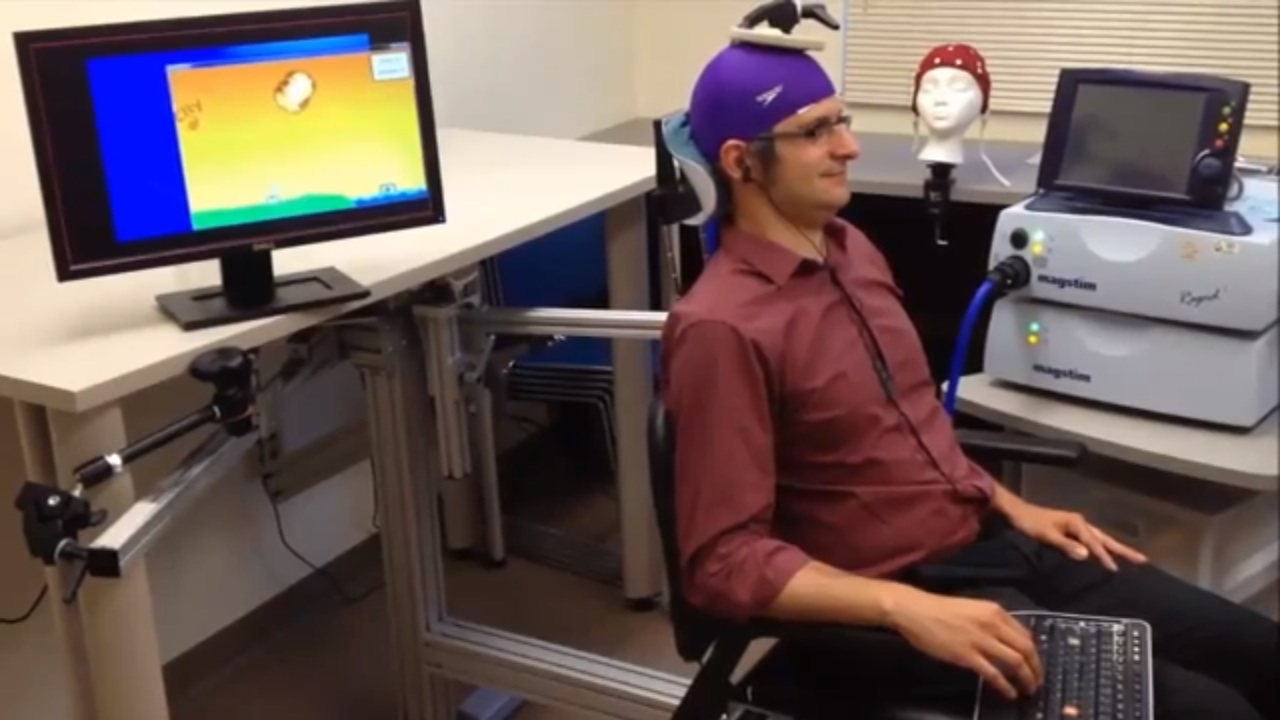Remember the rodent mind meld we told you about earlier this year, in which researchers used one rat’s brain to control another rat’s movements? A group of scientists at the University of Washington just upped the ante, using a human brain to control… another human brain.
The gist of it is this: Rajesh Rao sat on one side of the school’s campus, hooked up to a relatively non-invasive EEG machine, and thought about moving his hand. Andrea Stocco sat all the way on the other side of campus, also hooked up to fairly minimal equipment, and his hand moved. See it on video above. Check out that swim cap!
Science Daily explains the nuts and bolts:
Electroencephalography, or EEG, is routinely used by clinicians and researchers to record brain activity noninvasively from the scalp. Transcranial magnetic stimulation, or TMS, is a noninvasive way of delivering stimulation to the brain to elicit a response. Its effect depends on where the coil is placed; in this case, it was placed directly over the brain region that controls a person’s right hand. By activating these neurons, the stimulation convinced the brain that it needed to move the right hand.
Stocco offered some potential real-life scenarios for the technology–if an airline pilot lost consciousness, another pilot on the ground could control a passenger’s movements to right the plane, for he said, or disabled people could ask for food or water without speaking.
“It was both exciting and eerie to watch an imagined action from my brain get translated into actual action by another brain,” said Rao. “This was basically a one-way flow of information from my brain to his. The next step is having a more equitable two-way conversation directly between the two brains.”


